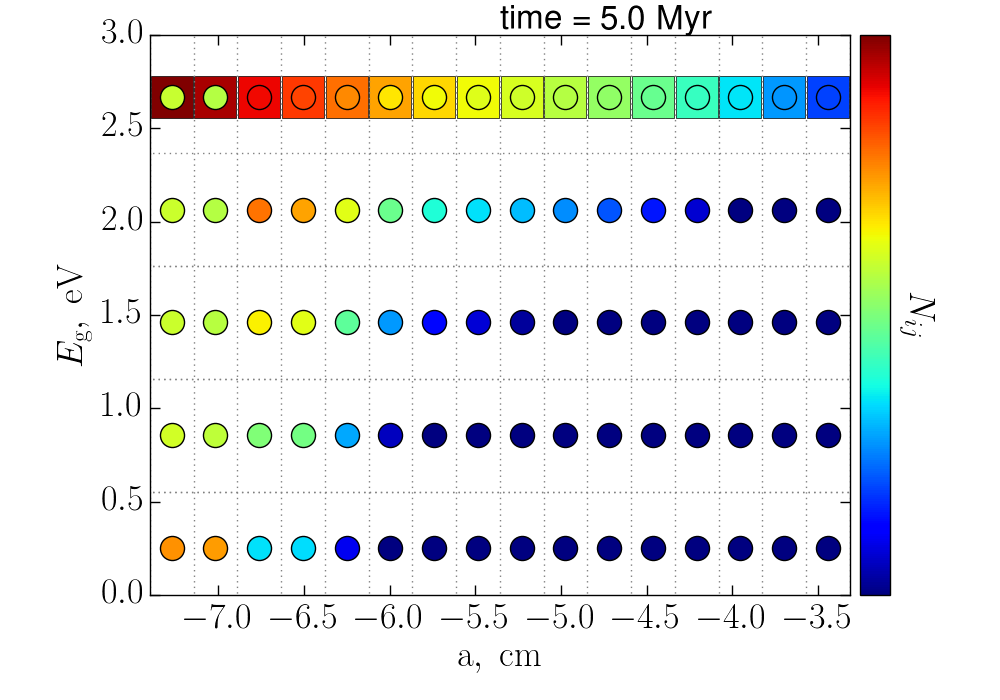|
We present a numerical tool Shiva designed to simulate the dust destruction in warm neutral, warm ionized, and hot ionized media under the influence of photo-processing, sputtering, and shattering. The tool is designed primarily to study the evolution of hydrogenated amorphous carbons (HACs), but options to simulate polycyclic aromatic hydrocarbons (PAHs), silicate and graphite grains are also implemented. HAC grain photo-processing includes both dehydrogenation and carbon atom loss. Dehydrogenation leads to material transformation from aliphatic to aromatic structure. Simultaneously, some other physical properties (band gap energy, optical properties, etc.) of the material change as well. The Shiva tool allows calculating the time-dependent evolution of the dust size distribution depending on hydrogen, helium, and carbon number densities and ionization state, gas temperature, radiation flux, relative gas-dust and grain-grain velocities. For HAC grains the evolution of band gap energy distribution is also computed. In this paper we describe a dust evolution model, on which the tool relies, and present evolutionary time-scales for dust grains of different sizes depending on external conditions. This allows a user to estimate quickly a lifetime of a specific dust grain under relevant conditions. As an example of the tool usage, we demonstrate how grain properties and corresponding infrared spectra evolve in photo-dissociation regions, H II regions, and supernova remnant shocks.
|
|



